Scarbo Performance SVF1 First Drive Review | A hot-rodder’s take on vintage F1
THERMAL, Calif. — Some turn their nose to the sky as soon as they hear the term, “replica.” They only care for “originals,” cars that are inevitably destined to collect dust in someone’s impeccably clean garage, preserved for posterity, and never revved in anger or given the beans in fear of fouling up an “investment.” Joe Scarbo thinks this “mere existence” is a boring one, that cars are meant to be driven hard – period. That’s the outlook that spurned him to create the SVF1, an ass-kickin’ track weapon so good, and so demanding, our body quit well before we wanted to hand back the keys.
Once you realize what the Scarbo Performance SVF1 actually is, you’ll get it. The open-wheeled, open-cockpit retro-racer is modeled after a 1967 Ferrari F312 Formula One car, and many, justifiably, consider its sultry, minimalist lines to be among the prettiest F1 designs. However, the guts under its beautifully hand-beaten aluminum exterior are more SoCal hot-rodder than devout Tifosi replica. Made even clearer that this track beast resides in the former is what powers it; a Red, White, and Blue-blooded GM-sourced, 430-horsepower LS1 V8.
You can’t get much more American than that.
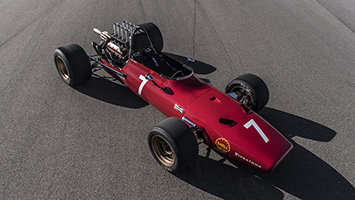
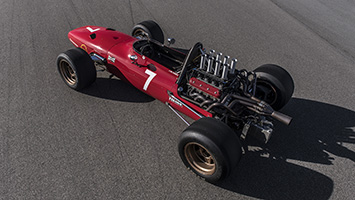
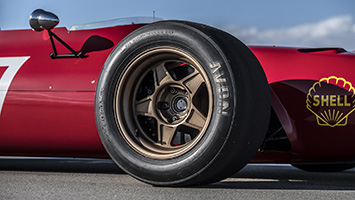
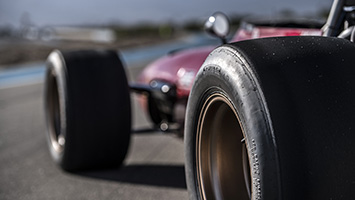
Our date with the SVF1 occurred at The Thermal Club near Palm Springs, an automotive oasis plopped squarely in the middle of an agricultural hub. The freshly finished facility is just a few hours outside of Los Angeles, but unlike the better-known Willow Springs, the track surface here is absolutely pristine, on top of which there was a fine mist of sand, a condition which kept both us and the SVF1 on our tiptoes.
To provide the perfect soundtrack for our track adventure, Scarbo married the LS1’s fly-by-wire throttle system with eight velocity stacks, providing an otherworldly induction yowl. This is punctuated by a guttural exhaust featuring an eight-into-one collector with a three-inch exit. Upon startup, the SVF1 is sends shivers through your body, and like chain lightning it propagates through the bodies of anyone within 60 feet. Grunt and stamina are required to shift the transaxle 5-speed manual transmission from a 986-generation Porsche Boxster mated up to the LS1. No flappy paddles or dual-clutches here.
You get into the SVF1 by placing your feet onto the softly padded seat and sliding your butt in-between its fuel tank, which straddle your hips and posterior. Clip into the five-point harness and you’re eyeball level with the truly massive Avon race-spec slicks. It isn’t until you’re strapped in, priming the fuel pump with a mechanical toggle, and looking out through your helmet’s thin visor that you begin to realize the raw effort you’re about to experience.
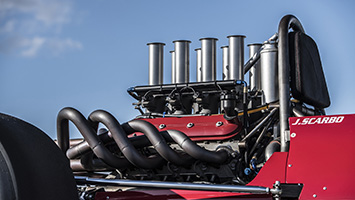
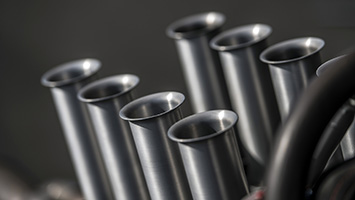
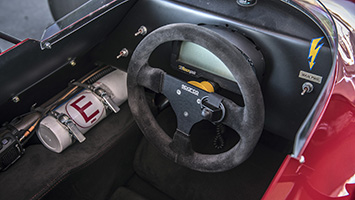
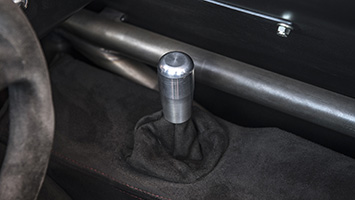
As we headed toward one of Thermal’s smaller configurations, we don’t have much time to consider the SVF1’s $112,500 price tag, our inexperience with this track, or the fact that the SVF1’s only traction control was the heat in the slicks and the restraint of our right race boot. Pit exit comes before we can dwell on it, and then we’re onto the wind-swept track.
When the Avon slicks are hot, they’ve got monumental grip. Cold, you might as well be roller-blading on ice. Given the lack of traction control, and the dusty track surface, we use the first lap to get well-acquainted with the SVF1’s instantaneous throttle response, the shifter’s heft, and its unassisted quick ratio steering. Those early laps were messy and full of on- and off-throttle oversteer. There’s also zero downforce to aid in traction management. Eventually the tires got gummy, the sand was swept off the racing line, and our bravery meter ticked closer to “James Hunt” territory.
Thanks to the staggering grip served up by the warm tires, the next thing that becomes apparent is the muscle needed to wrangle the SVF1 – and our lack of it. Just as you get to what your arms protest are the car’s limits, and the SVF1 offers another quarter turn of steering lock and even more grip. There’s also nary an ounce of roll in the entire chassis, although there was considerable roll in our necks as the g-forces increased throughout our session. The experience of working up the courage to stay flat over a crest and pin the SVF1 into a set of S-curves is easily worth a sore neck.
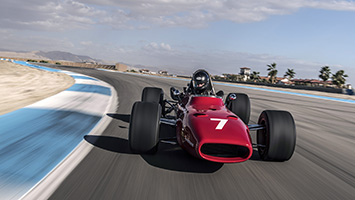
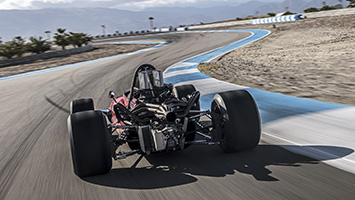
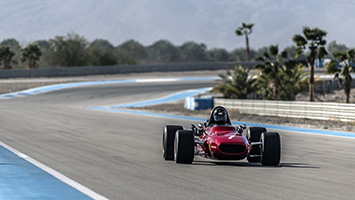
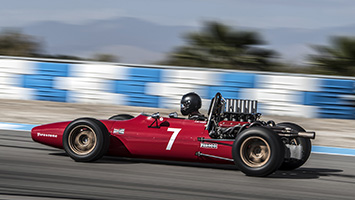
The aural cacophony produced by its eight-into-one exhaust is unhinged divinity. On throttle, the mighty motor sings, but on overrun, a crackling, rolling salvo of cannon-fire reverberates through the cockpit. Today, 400 horsepower barely registers in the performance world, but the key here is power-to-weight ratio. The SVF1 weighs less than 1,300 lbs – anything else would be drastic overkill. Of course, Joe says he’d love for a customer to spec one with an LS7 behind the driver one day.
The SVF1’s fuel tank running low, we turned into the pits with dead sore arms and killed the engine. As we opened up our visor, the only thing we could mutter was an astonished, “holy crap.” Joe, being a consummate gear head, only laughed. He knows he doesn’t need to say much to sell anyone on the car.
SoCal hot-rodders aren’t known for building classic European racing replicas, or truth be told, cars designed to navigate something other than a straight line. But the SVF1 turns those outdated ideas on their heads, as not only does it remaster a classic shape that’d likely never see any form of racing or track experience ever again, but does so in a way that doesn’t require a Scrooge McDuck-esque fortune to buy, run, or insure. Garage queens and their owners be damned.
It’s been days since we drove the SVF1. Hell, we’re still grinning.
Related Video:

